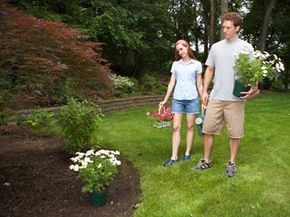If you're trying to improve your property, you may cringe at the thought of anything as complicated as a landscape analysis. Can't you just plant some flowers and be done with it? Honestly, why would anyone want to start with a landscape analysis? Because completing an analysis could result in many potential benefits.
Some possible goals to consider when contemplating a landscape analysis are:
Advertisement
- Increasing your home's resale value
- Ensuring that your property is beautiful in all four seasons, not just when the rose garden is in bloom
- Economizing on heating and cooling your home
- Minimizing your home's environmental impact
- Minimizing the amount of maintenance work you need to do
- Improving privacy and security
- Creating a space for entertaining, play, sports or hobbies
- Giving yourself a ready source of food or fresh flowers
- Preventing damage to your home from pests and invasive roots
A good landscaper will ask questions about all these goals, as well as other aspects of your habits and lifestyle. He will consider these points as he conducts a landscape analysis of your property. Then -- at the intersection between your goals and the practical considerations of your piece of land -- he'll help you find your ideal garden.
This article takes a look at all the considerations that play into landscape analysis, from practical angles such as mapping boundaries and utility lines to less visible issues of space usage and environmental impact. It may also help you think of some new questions to ask your landscaper. Read on.
Advertisement
